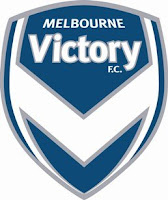
Full name : Melbourne Victory Football Club
Nickname(s) : Victory, The Big V
Founded : 2004
Ground : Etihad Stadium Melbourne, Australia (Capacity: 56,347)
Chairman : Geoff Lord
Head Coach : Ernie Merrick
League : A-League
2008–09 : 1st (league) Champions (finals)
Melbourne Victory Football Club is a football (soccer) club in the Australian A-League. Based in Melbourne, Victoria, Melbourne Victory FC are the largest club in the league, drawing the largest average crowds of any club and consistently setting league and domestic club football attendance records.
Melbourne Victory FC is also the most successful club in the history of the A-League, having won four major domestic titles in as many seasons. Melbourne Victory are the only club to complete the Premiership-Championship double having in fact completed the Premiership-Championship double twice, winning both during the 2006–07 and 2008–09 seasons. Melbourne Victory are also the first and only club to complete the domestic treble, winning the Challenge Cup, Premiership and Championship, all in the 2008–09 season.
Melbourne Victory are the reigning A-League Premiers and Champions, following their success in the 2008–09 season.
History
The Beginning
Melbourne Victory was founded in 2003 after the announcement of a revamped domestic league in Australia, which saw the National Soccer League disbanded in 2003 and replaced by the A-League.
Football Federation Australia (FFA) approved the Melbourne Victory consortium as Melbourne's representative in the league, with Belgravia Leisure Pty Ltd backing the club. The chairman and CEO of Belgravia Leisure, Geoff Lord, was installed as the inaugural chairman of Melbourne Victory F.C. Melbourne Victory’s major sponsor was Samsung, with KFC also taking up the sleeve sponsor.
Gary Cole (an ex-Socceroo) was hired to become Football Operations manager, and was soon joined by Ernie Merrick, appointed as head coach from the Victorian Institute of Sport (VIS). Archie Thompson, a then regular Socceroo who had been playing in Belgium with Lierse S.K., was the club's first player signing. The club soon signed three more internationals for the inaugural squad – then Socceroo Kevin Muscat, Austrian Richard Kitzbichler and Belgian Geoffrey Claeys.
* Trial match #1 MV/VIS vs Oakleigh Cannons 30 April 2005
* Trial match #2 MV vs Bulleen Zebras 4 May 2005
* FIFA Club World Championship Adelaide vs MV 7 May 2005
The remainder of the squad was quickly assembled, although room was left for signings before Melbourne played its first competitive match against Adelaide United in a World Club Championship qualifier. Unfortunately, this resulted in an inconsistent first season. Although highlights included a 5–0 drubbing of major rivals Sydney FC, Melbourne Victory finished as the worst Australian team (ahead of the New Zealand Knights), whilst Sydney, their major rivals went on to win the first A-League Championship.
The Victory has also set up a sister-city relationship with Chinese Super League Club, Tianjin Teda F.C. The two clubs play against each other annually during the off-season, known as the Lord Mayor’s Cup.
Melbourne Victory are considered a broad-based club, appealing to all nationalities. The team colours – navy blue and white – are traditionally Victorian state colours.
Early Years 2005–2010
It was widely believed that Melbourne Victory would be contenders for the A-League championship but their inaugural season in the Hyundai A-League was anything but - the team only managed seven wins out of twenty-one matches, finishing second last.
The season saw Melbourne Victory sign two returning Socceroos, (Archie Thompson and Kevin Muscat). The highlight of the season was the 5–0 thrashing of eventual champions Sydney F.C. (with 2 goals from Archie Thompson and Kevin Muscat, and one from Richard Kitzbichler). At the end of the season the Melbourne Victory player of the year award was handed to Kevin Muscat, and the club top goal scorer going to Archie Thompson.
Melbourne began the 2006–2007 Hyundai A-League season hoping to vastly improve on their 7th place in the inaugural 2005–2006 season. Coach Ernie Merrick had made a number of off-season signings to bolster the squad with skill and experience including 3 Brazilians Alessandro, Claudinho, Fred along with Scottish Premier League player Grant Brebner. After a hugely successful round 2 fixture against Sydney FC at Etihad Stadium which attached the largest home and away crowd for regular club match, Melbourne Victory announced that they would move all but one match from Olympic Park to the new venue Melbourne would become the first team to complete the A-League double in the history of the competition; clinching the premiership against the New Zealand Knights 4–0 at Olympic Park with 4 rounds of competition remaining, then beating Adelaide United 6–0 in the grand final at a sold out Etihad Stadium to take the championship. Melbourne also qualified for the 2008 Asian Champions League as A-League Champions.
Looking to capitalise on their successful 2006/07 campaign, Melbourne made some strong off-season signs including former Socceroo Ljubo Milicevic and Costa Rican international Carlos Hernández to cover the hole left by the departure of Fred to MLS club DC United. Again with the league largest crowds and a record membership of over 20,000, Melbourne were undefeated after 7 rounds but the season would slip away with some poor home performances and a mounting injury list. A late season rally gave Melbourne a hope of making the finals up to the second last round but they would finish 5th, 4 points out of the finals. Melbourne became the first side in A-League history to score 100 goals, reaching the mark after 65 games, with their first goal against Wellington Phoenix at Etihad Stadium on 11 January 2008. The 2008 Asian Champions League campaign started with a 2–0 home victory of Korean side Chunnam Dragons but inexperience was to show with the team not able to adapt to the East Asian style and long away trips.
The 2008/09 season brought the start of the A-League Youth League and the introduction of the W-League. Melbourne fielded teams in both competitions. Melbourne actively recruited, bringing in Socceroo Michael Thwaite, Costa Rican World Cup player José Luis López as well as Ney Fabiano from Asian Champions League rivals Chonburi FC.
Melbourne's season got off to an optimal start, winning the Pre-Season Challenge Cup. A 0–0 draw resulted in a penalty shoot-out, Victory winning 8–7 against the Wellington Phoenix.
After grabbing the Pre-Season Cup, the Victory were held to a 0–0 draw away against Sydney FC. They reinforced their premiership favouritism by coasting to 4–2 and 5–0 victories against Wellington Phoenix and the Newcastle Jets. Despite this, they succumbed 0–2 to an undermanned Sydney side at Etihad Stadium in front of 32,000 fans.
On the 6th of December, they became the 1st A-League club to amass total crowd figures of 1,000,000.
On the 24th of January, Melbourne Victory won its final game of the season against Wellington Phoenix . The 2–0 win in front of 29,904 fans placed Victory ahead of Adelaide United on goals scored for the premiership title, a margin United failed to achieve in its 1–0 win over the Central Coast Mariners.
The Victory kicked off their finals campaign on the 7th of February in the major semi-final first leg against bitter rival Adelaide United at Hindmarsh Stadium, a game which was won courtesy of goals from Costa Rican Carlos Hernández and Danny Allsopp. The second leg would see Melbourne demolish Adelaide United 4–0 with goals from Thompson, Hernandez, Allsopp and Pondlejak, granting Melbourne passage to the Grand Final on a 6–0 aggregate. Adelaide then defeated Queensland to set up a rematch with Melbourne in the Grand Final, which the Victory won 1–0 with Tom Pondeljak scoring in the 59th minute to regain the A-League Championship and becoming the fist A-League team to win their 2nd Championship.
In, 2009-2010, Greek gambling giant Intralot became the Melbourne Victory's new major sponsor to replace Samsung. Their logo will feature on the front of Melbourne Victory's new strip.
The Victory made some off-season changes by releasing Steve Pantelidis to Gold Coast United & Sebastian Ryall to Sydney FC. Michael Thwaite will leave the club and go on loan to Gold Coast United for the new season. Several new signing were made, bringing goalkeeper Glen Moss from Wellington Phoenix, Thai midfielder Surat Sukha from Chonburi FC, the promotion of Matthew Theodore from the youth squad and the permanent signing of veteran Carlos Hernandez from L.D. Alajuelense for three years after his two year loan with Melbourne Victory.
Read More..
 Full name :Guangzhou Pharmaceutical Football Club
Full name :Guangzhou Pharmaceutical Football Club



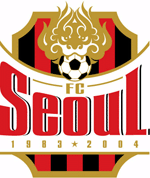


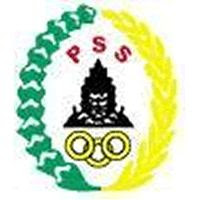

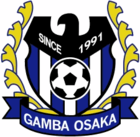




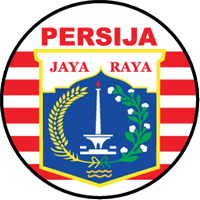
 Lorem ipsum dolor sit amet, consectetur adipiscing elit. Duis tempor dui id erat. Donec commodo, nunc ac bibendum porta |
Lorem ipsum dolor sit amet, consectetur adipiscing elit. Duis tempor dui id erat. Donec commodo, nunc ac bibendum porta | 